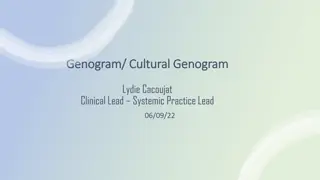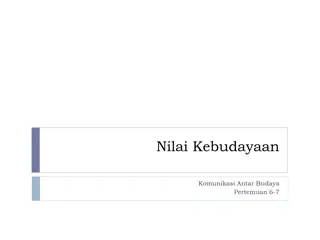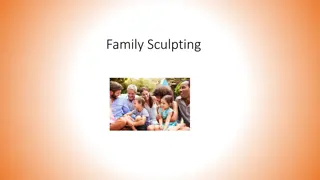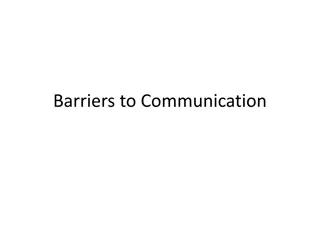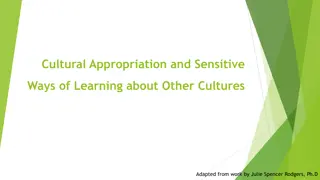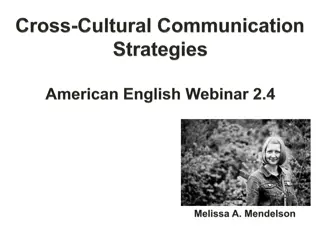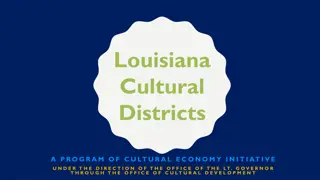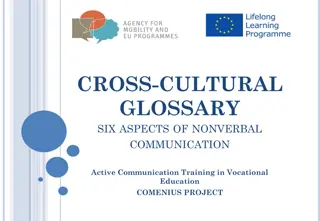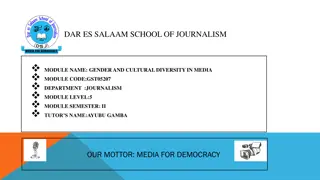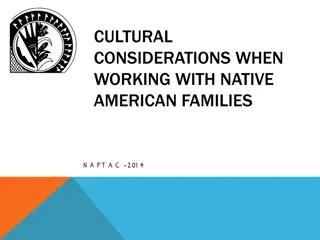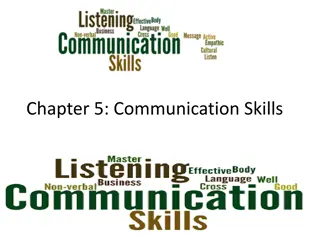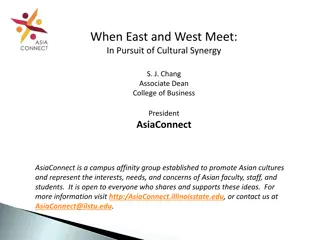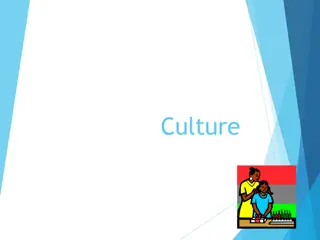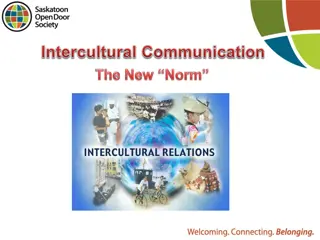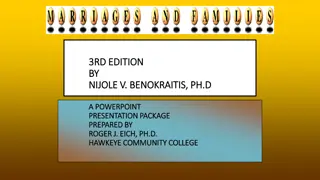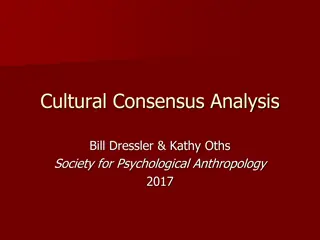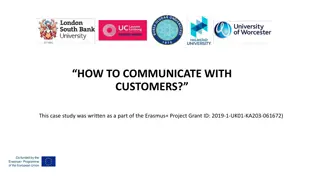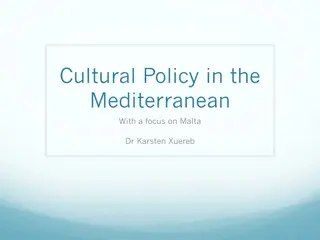Understanding Cultural Differences and Deep Structures: Family, Community, and Communication
Explore the intricate realm of cultural diversity and societal dynamics through the lens of family, community, and communication. Delve into the deep structures of various cultures, uncovering the core beliefs and institutions that shape collective identities. Discover the profound impact of family as the primary transmitter of values and traditions, influencing individual behavior and worldview. Gain insights into the intricate web of social organizations and institutions that underpin cultural norms and practices, fostering understanding and appreciation for the rich tapestry of human experiences.
Download Presentation

Please find below an Image/Link to download the presentation.
The content on the website is provided AS IS for your information and personal use only. It may not be sold, licensed, or shared on other websites without obtaining consent from the author. Download presentation by click this link. If you encounter any issues during the download, it is possible that the publisher has removed the file from their server.
E N D
Presentation Transcript
AKAR KEBUDAYAAN: KELUARGA DAN KOMUNITAS Komunikasi Antar Budaya Pertemuan 2 Samovar et all. 2010. Communication Between Cultures
Why are we different? Why my friend love money so much? Why do they need to pray five times a day? While I am only doing it once a week? Why some people prefer to be secluded? Why some culture celebrate death? Why some people still lives with their parents? Why do they eat raw food? Why their food has so many spices? Samovar et all. 2010. Communication Between Cultures
The Deep Structure of Culture We believe the key to why a culture views the world as it does, can be found in that culture s deep structure. the unconscious assumptions about how the world works, that unifies a culture, makes each culture unique, and explains the how and why of a culture s collective action At the core of any culture s deep structure are its social organizations / institutions. Family Community Religion Samovar et all. 2010. Communication Between Cultures
The people of different civilizations have different views on the relations between God and man, the individual and group, the citizen and the state, parents and children, husband and wife, as well as differing views of the relative importance of rights and responsibilities, liberty and authority, equality and hierarchy - Huntington Samovar et all. 2010. Communication Between Cultures
Deep Structure Institutions Carry a Cultures Most Important Beliefs Deep Structure Institutions and their messages endure Deep Structure Institutions and their messages are deeply felt Deep structure institutions supply much of a person s identity Samovar et all. 2010. Communication Between Cultures
Family Family is the principal transmitter of knowledge, values, attitudes, roles, and habits from one generation to the next. Through words and example, the family shapes a child s personality and instills modes of thought and ways of acting that become habitual. - DeGenova & Rice A groups of intimates, who generate a sense of home and group identity; complete with strong ties of loyalty and emotion, and an experience of a history and a future - Noller & Fitzpatrick Samovar et all. 2010. Communication Between Cultures
Forms of Family Nuclear Family Extended Family Changing Families in the world Globalization and Families Mass Media Immigration Samovar et all. 2010. Communication Between Cultures
Functions of the Family Reproduction Teaching economic values Socialization Teaching core values and worldview Identity development Communication training Samovar et all. 2010. Communication Between Cultures
Communication, Culture, and Family In many ways families, with regard to child-rearing practices, have many similarities there is much commonalities across cultures in the construal of infancy and early childhood, based on biological needs for care, nutrition, protections, etc Smith and associates Samovar et all. 2010. Communication Between Cultures
Cultural Variants in Family Interaction Gender Roles Changing Gender Roles Individualism and Collectivism Age Grouping Social skills Samovar et all. 2010. Communication Between Cultures
https://www.youtube.com/watch?v=JB5i6kgkvCg https://www.youtube.com/watch?v=LqKuXCGBDEc Samovar et all. 2010. Communication Between Cultures
LETS READ SOME HISTORY ON YOUR BOOK! Samovar et all. 2010. Communication Between Cultures



